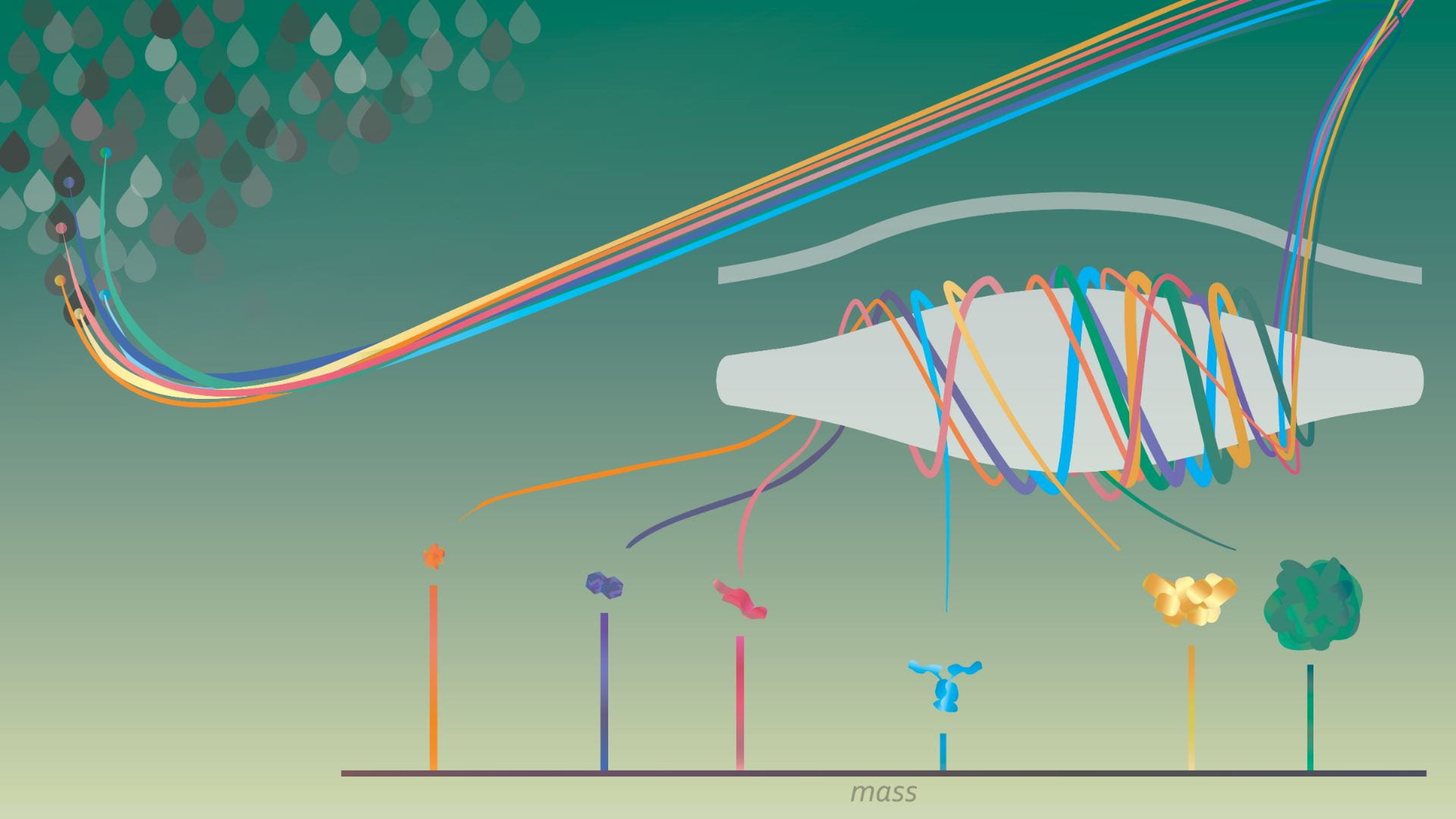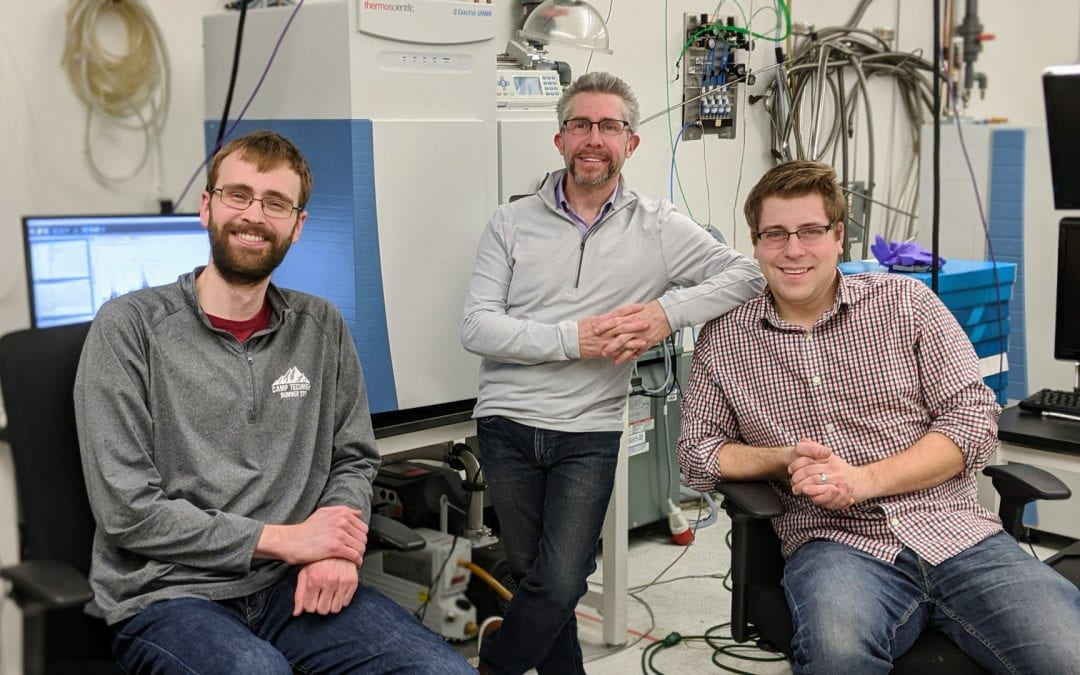Northwestern Proteomics, a Chemistry of Life Processes Institute-affiliated center, together with an interdisciplinary team of Northwestern mathematicians, experimentalists, biomedical engineers, and biochemists, recently published two academic papers announcing a new, game-changing technique for characterizing and identifying proteins with extreme precision.
For the first time, using the commercially available Orbitrap mass analyzer system, researchers successfully integrated two mass spectrometry (MS) approaches: native or top-down MS and, an even more pioneering technique, individual ion mass spectrometry (I2MS), both pioneered by the Kelleher Research Group. The powerful and new approach, two-and-a half years in the making, will help illuminate complex questions within fundamental biology and transform understanding of disease and infection and to accelerate the design of new therapies.
“If you want to know the distribution of molecules that are in a sample, you can now know that within an hour,” says Neil Kelleher, Walter and Mary E. Glass Professor of Molecular Biosciences and Faculty Director, Northwestern Proteomics, who led the research. Kelleher is a pioneer in the fields of native and top-down mass spectrometry. “We’ve been able to fragment a protein, read out the fragments as individual ions, and determine their charge. With that information, we then calculate their mass and resolve the protein components.”

Single molecules of proteins or virus-like particles rotating around the commercially available Orbitrap analyzer to determine their exact mass. Nature Methods cover art by Michael Mullowney, PhD.
Traditional MS measurements collect averaged data from a mixed population of multiple ions. Mass spectrometers work by measuring the mass-to-charge ratio of each item. I2MS facilitates the accurate detection of each ion and their individual charges to reveal their precise mass.
In a paper published today (March 2) in Nature Methods, first author Jared Otto Kafader, senior research associate in the Kelleher Research Group, and collaborators, detail the process for developing the I2MS method.
“We created a mass spectrum platform and applied it to a huge range of intact proteins – everything from small proteins to antibodies to virus-like particles and demonstrated that we can deconvolute masses and obtain actual mass assignments,” says Kafader.
The breakthrough has major implications for the biopharmaceutical industry and biomedical research writ large according to Kelleher, a member of the Chemistry of Life Processes Institute.
“Antibody-based drugs are comprised of a complex mixture of large molecules that are often based on proteins, or virus particles, that reach well into the megadalton range,” says Kelleher. “Now, you can get the size distribution and exact characterization of the proteins in that mixture. Instead of having some blurry view of what you’re injecting in the body as a drug, this technology allows you to get down to the molecular level and be very precise in doing so. In the old way, there would be no data.”
In a second paper published in the Journal of Proteome Research, researchers used I2MS to detect fragment ions resulting from top-down analysis, a significant leap forward in current capabilities for protein characterization. Fragment ions are crucial for characterizing a protein’s sequence and post-translational modifications. The fragments detected with I2MS were complementary with those from traditional analysis, greatly enhancing the combined level of detail for characterizing a protein.
“Whereas the first approach maps the protein universe, the second approach provides super-detailed characterization of each protein through single particle/ion counting,” says Kelleher, a member of the Chemistry of Life Processes Institute.
The new technology promises to aid understanding of disease and infection and accelerate the design of vaccines for deadly viruses, such as the coronavirus.
“This technology enables researchers to weigh the whole virus and get a mass distribution, virus particle by virus particle, and determine the difference in mass of different strains of a constantly mutating virus,” says Kelleher. “The approach will allow epidemiologists to know the efficacy of different vaccines, irrespective of how complicated the sample is. Most approaches take a long time to accomplish that. With our approach, you can do it in a matter of minutes.”
The research was supported by National Institute of General Medical Sciences, National Institutes of Health (grant P41 GM108569), and Thermo Fisher Scientific and the Sherman Fairchild Foundation.
by Lisa La Vallee
Main image: (Left-right): Jack McGee, Chemical and Biological Engineering graduate student, Professor Neil Kelleher, and Jared Otto Kafader, senior research associate, in the Kelleher Research Group.
